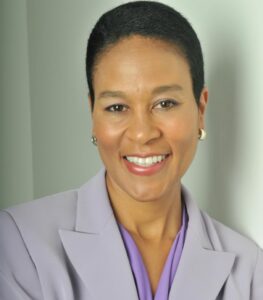“There is this persona [in the military] that everyone is strong. Stressors don’t affect them. But it really wasn’t true. It not only wasn’t true for the people who I was leading, it really wasn’t true for me either. We pack it down, and we don’t ever talk about these things. I discovered by not talking about the stressors that we’re experiencing in our lives, it really became untenable.”
Col. Charlie Davis, Retired United States Military Intelligence Officer
This sentiment is common not only in the military, but in many aspects of our personal and professional lives.
A Potentially Crippling Business Risk
According to research by SAS1, a concerning resilience gap exists. While 97% of global business executives believe business resilience is important, only 47% believe their organization is resilient. Organizational resilience extends well beyond operational checklists and backup systems. More importantly, your level of organizational resilience is reflective of the resilience of the people within it. The resilience and well-being of your human capital is a critical risk factor. If left unaddressed, the levels of stress, anxiety, overwhelm, and burnout experienced will cripple your business.
In the current episode of my podcast, GGG Unleashed: Better Leaders, Better Workplaces, Retired Col. Charlie Davis, gives us a perspective of what a culture of resilience feels like and, as a leader, how to set the stage for that kind of culture to develop.
3 Conditions Foundational for Human-Centered Resilience
There are three conditions that Col. Davis demonstrates must be in place to set the stage for the possibility of a deeper, human-centered resilient culture to develop within your organization. Yet, I find that these conditions are often missing.
1. Vulnerability
Talking about emotions and stress is taboo in organizations. You’re seen as weak. What nobody is saying, ‘I have some of the same concerns.’ Setting aside ego and removing the stigma of vulnerability are the first steps to opening the door for condition #2, Psychological Safety.
2. Psychological Safety
Can someone really be vulnerable in your workplace? How are people treated when they are? Ridiculed and reprimanded, or respected and heard? Col. Charlie Davis shares how he approached establishing psychological safety within his units. “When somebody was doing a very difficult activity and they weren’t feeling good about it, they could come to anyone, even their leaders or their subordinates, and say, ‘Hey, this is how I’m feeling about this. What do you think?’ And we were able to work through those challenges. I found it really built a stronger, more cohesive, and more resilient atmosphere.”
Creating an environment of psychological safety opens the door for condition #3, Transparent Dialogue.
3. Transparent Dialogue
This third condition, transparent dialogue, works best when opportunities to connect are made available, both one-on-one and collectively. “I really set up an intentional approach to talk about what we were feeling,” said Col. Davis. “And I knew that the people I was leading would not do it if they didn’t see their leaders doing the same. I decided to really talk about what we are experiencing, the stress of it, and show them that the Colonel is experiencing the same thing that they’re experiencing… the same anxiety, the same stress. Being willing to be vulnerable with that showed them they could be vulnerable, too.”
A Stronger Team
When these three conditions are in place, instead of an environment of high stress and an unwillingness to deal with it, greater well-being and a pathway to resilience can develop. “Because we started to rely on each other at another level than just leaders and subordinates who have a mission to go do things, we were now actually closer and stronger,” Col. Davis concludes.
To what degree are these three conditions present in your organization? What needs some focused attention? What could you accomplish if your team was actually closer and stronger? How might these conditions empower you personally?
Don’t miss Part 1 of my fascinating interview with Col. Davis. You can catch it here or wherever you get your podcasts.


